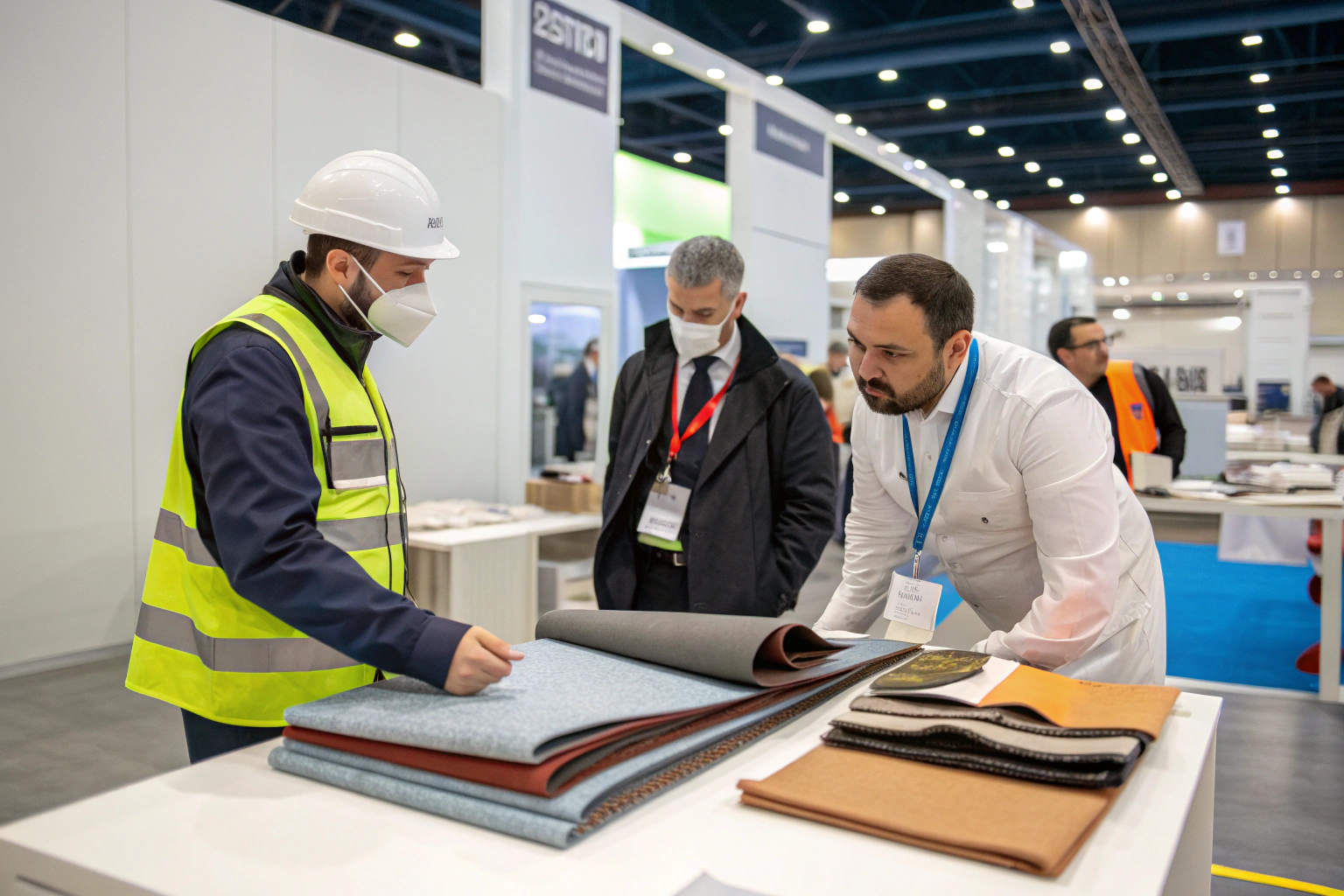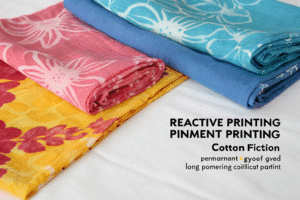When sourcing fabrics for industries like nuclear energy, medical labs, or defense, one of the most pressing problems is safety compliance. Many buyers struggle to find reliable suppliers who can provide textiles that not only meet EN 1073-2 standards but also deliver consistent quality, durability, and global shipping support. Without the right supplier, companies face delays, failed inspections, and unnecessary risks.
EN 1073-2 certified fabrics can be found through specialized technical textile manufacturers, European standard-compliant suppliers, and international fabric producers who provide radiation-protective and contamination-control materials. These suppliers often operate in regions like Europe, China, and North America, where the regulatory ecosystem and advanced textile clusters support certified production.
Choosing the right source is not just about price or availability. It is about securing long-term partnerships with fabric providers who understand performance standards, offer lab-tested materials, and can ensure reliable logistics from factory to final destination.
What Is EN 1073-2 Certification?
EN 1073-2 is a European standard that specifies protective clothing against radioactive particles. It is used by nuclear facilities, laboratories, and specialized industries that deal with radioactive dust. The certification does not cover ionizing radiation shielding (like lead aprons) but focuses on protection against particulate contamination.
EN 1073-2 certified fabrics are usually tightly woven, laminated, or coated materials tested for particle barrier efficiency, seam strength, resistance to abrasion, and comfort in demanding conditions.
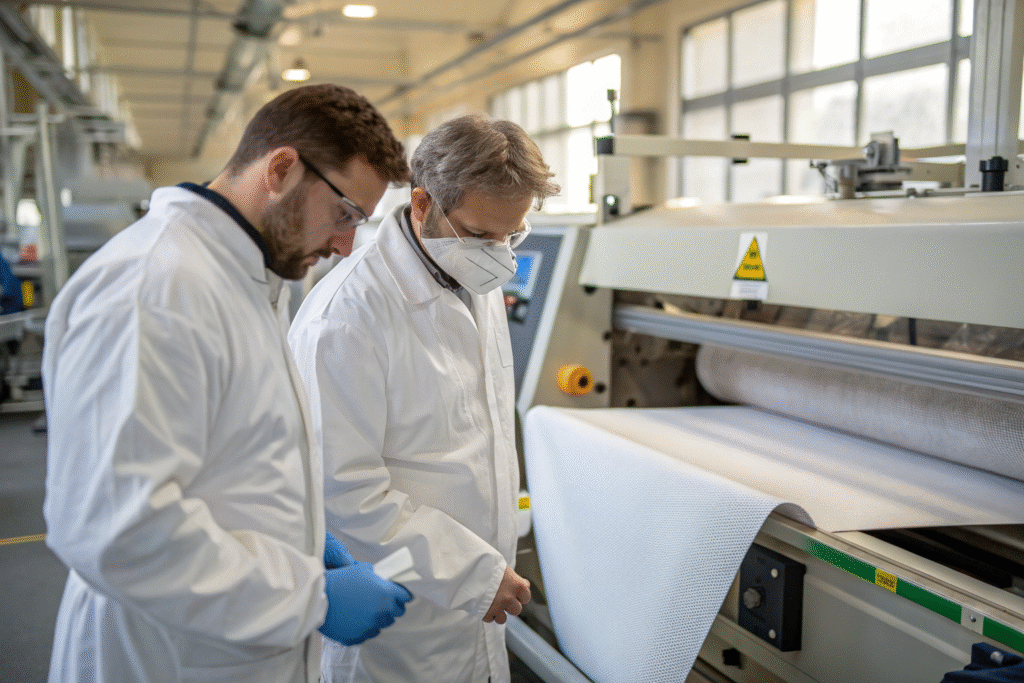
Why Is EN 1073-2 Important for Buyers?
Companies in nuclear and medical fields face strict safety regulations. Using uncertified fabrics can result in compliance failures, rejected shipments, or legal risks. European Standards EN 1073-2 ensures that the clothing barrier is effective and safe.
Another critical aspect is worker protection. According to Health and Safety Executive UK, the standard plays a vital role in ensuring operators in nuclear facilities can work safely in contaminated areas.
How to Verify Certification?
Buyers should always request third-party lab test reports and CE certification documents. Reputable suppliers often work with SGS, ITS, or other CNAS-accredited labs to prove their fabric’s compliance.
Where to Source EN 1073-2 Fabrics Globally?
The global textile market has a few key hubs where EN 1073-2 certified fabrics are manufactured and exported.
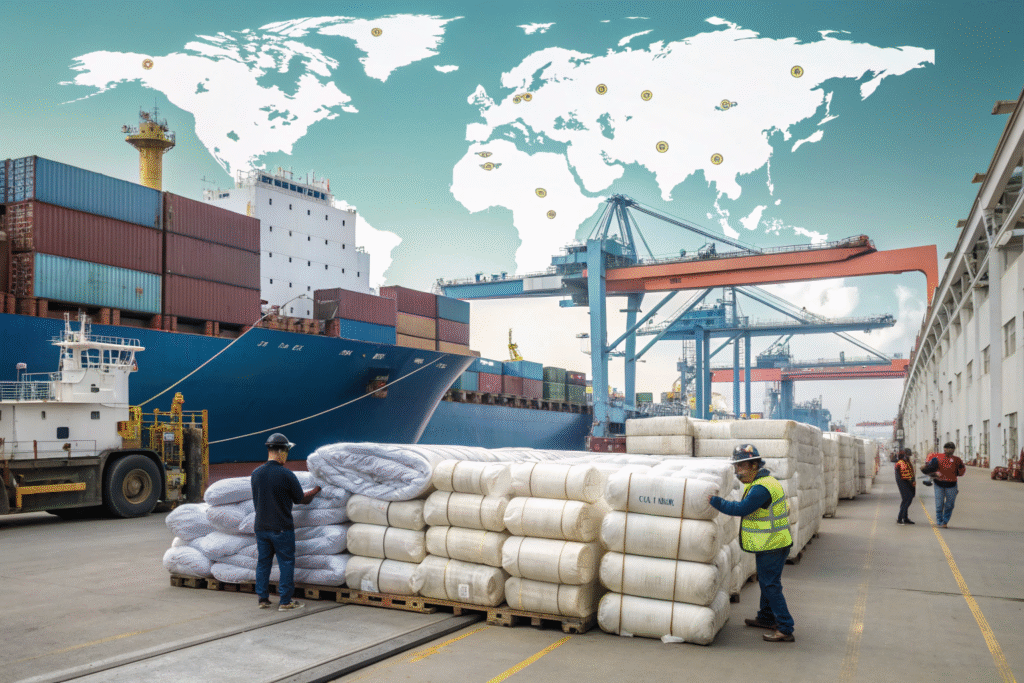
Europe: Traditional Compliance Leaders
European manufacturers have long experience with nuclear protective clothing. Countries like Germany and France host companies that specialize in advanced protective fabrics. Buyers seeking local suppliers often pay a premium for compliance assurance but benefit from shorter lead times within the EU. A resource like European Safety Federation can help connect with certified providers.
China: Competitive and Scalable
China is one of the world’s largest technical textile producers, particularly in protective and functional fabrics. In Keqiao, Zhejiang, companies like Fumao Fabric integrate weaving, coating, and quality testing in one supply chain. This makes China a strong option for bulk orders requiring CNAS-certified lab testing and flexible customization. Platforms like Made-in-China list multiple suppliers offering EN 1073-2 compliant fabrics.
What Qualities Should You Look for in These Fabrics?
Not every EN 1073-2 certified fabric is equal. Buyers must evaluate performance, durability, and comfort.
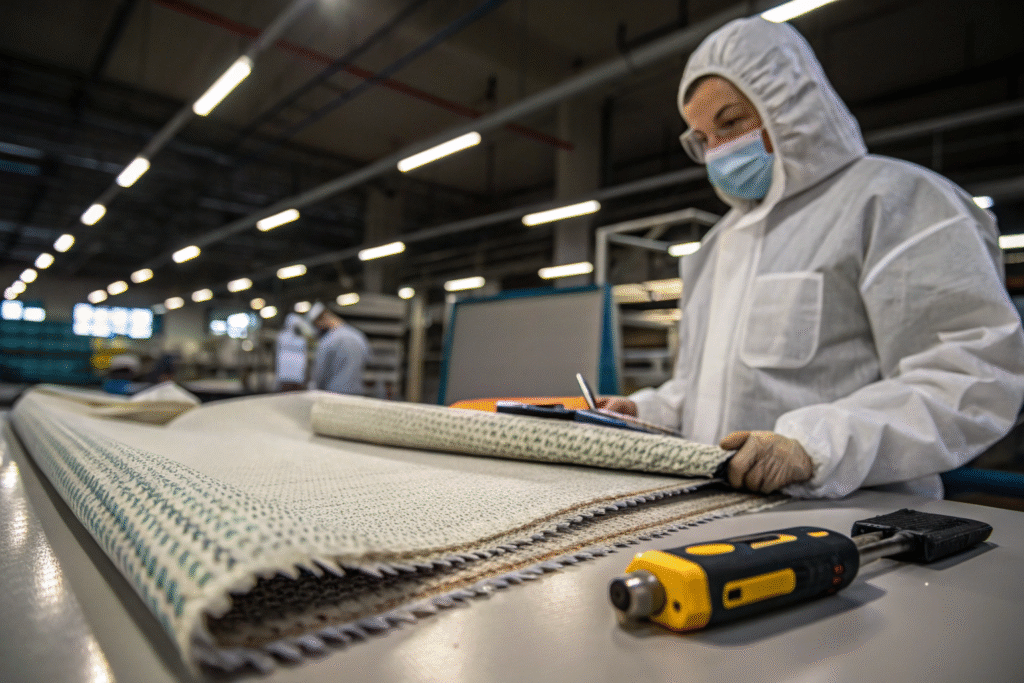
Particle Protection vs. Comfort – Which Matters More?
EN 1073-2 fabrics vary in weight and breathability. Some are heavy laminates offering maximum particle blocking, while others balance comfort and mobility for long working hours. According to ScienceDirect Textile Research, breathable membranes laminated with nonwovens are now a popular solution for nuclear workwear.
Resistance, Durability, and Laundering
Technical buyers should also ask about abrasion resistance, wash durability, and antistatic finishes. Frequent laundering can reduce performance if the fabric is not properly engineered. The Textile World Journal provides industry updates on how advanced coatings are extending fabric life cycles.
How to Choose the Right Supplier for EN 1073-2 Fabrics?
Selecting a supplier goes beyond finding a certified product. Buyers should consider quality systems, logistics, and post-sale service.

Should You Work With Direct Factories or Traders?
Direct factories offer better pricing, faster sampling, and closer control of quality. Traders provide broader sourcing but may add costs. For EN 1073-2 fabrics, where compliance documentation is critical, direct engagement with a manufacturer is often safer. Alibaba Safety Clothing Section can serve as a starting point, but long-term buyers often switch to factory-direct contracts.
What About Logistics and Tariffs?
Shipping radioactive protective fabrics involves complex logistics. Buyers in the U.S. should be aware of tariff exemptions on some protective clothing under HS codes. Consulting U.S. Customs and Border Protection ensures the right classification and helps avoid unexpected costs. Suppliers with international logistics support can save weeks in delivery time.
Conclusion
EN 1073-2 certified radioactive particle protection fabrics are not everyday textiles—they are specialized, highly regulated, and safety-critical. Whether sourcing from Europe for compliance assurance or from China for cost-effective scalability, buyers must verify certification, test results, and supplier credibility.
At Shanghai Fumao, we specialize in providing functional and certified protective fabrics that meet global standards. If you are looking to produce protective clothing with EN 1073-2 compliance, contact our Business Director Elaine at elaine@fumaoclothing.com. We will help you develop your fabric order with speed, safety, and guaranteed certification.

